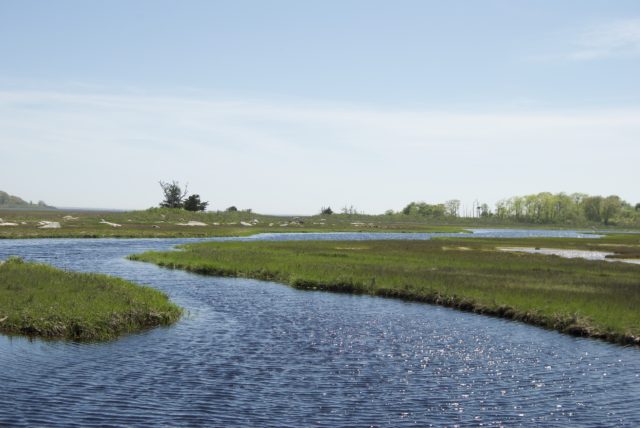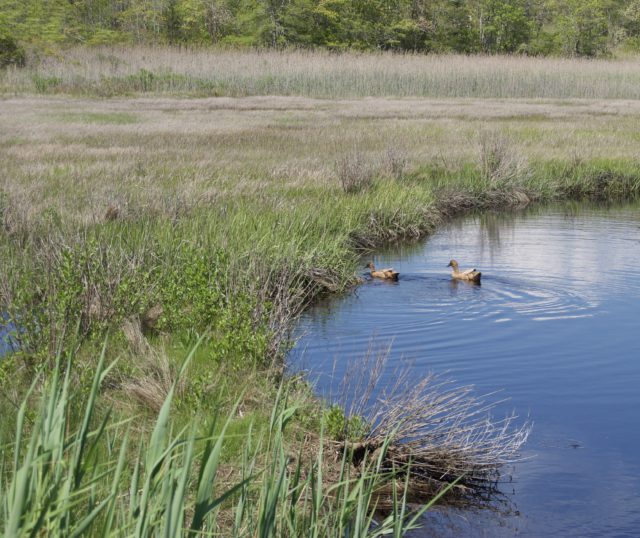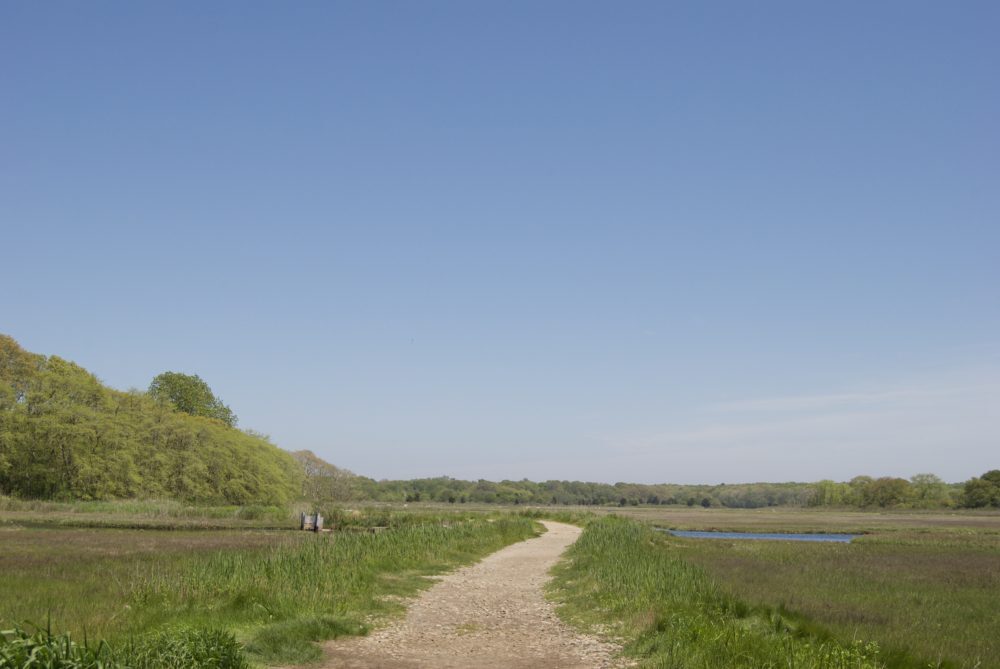You will pass McMansions on the way to this property, and even a few new constructions, so very close to the coastline. When you walk from the sunlit hardwood forests into the tidal wetlands, you can hear noise from powerboats and jet skis in Little Narragansett Bay. The hootin’ and hollerin’ carries, too. Overhead, a small plane drags a banner, as if this is a reasonable use of our resources in a time of climate crisis.
These are signs that this 1,013-acre site in the southeasternmost corner of Connecticut site is sorely needed.
Wetlands provide refuge for wildlife. They filter pollution and act as a buffer against flooding. As sea levels rise, their function becomes ever more important.
Connecticut College Arboreteum in 2015 reported that sea levels are already rising: “Between the late 1800’s and 1980, rates of sea level rise doubled at Barn Island and since 1980 have doubled again.” Eelgrass is already in decline, a response to the increase in water temperatures.
We have a desperate situation made more so by those stubbornly clinging to the denial phase. More than ever, we need visceral reminders that the human habitat is worth preserving, even if ultimately people are not able to make it out the other side.

Stonington’s Barn Island Wildlife Management Area, in its views, offers gentle reminders that our small sacrifices are worth making, as the site has also been described by DEEP as Connecticut’s “largest, most diverse and ecologically significant coastal Wildlife Management Area.”
A path weaves in and out of the surprisingly sunlit woods, alternating scenery with that of the salt marsh. Far from the dike trail, a Snowy Egret fishes for lunch. Forest and field also join to complete the WMA.
Barn Island is more than environmentally significant. The gravel lot off Stewart Road was the site of Thomas Stanton’s farmhouse; his farm is one of the locations where Venture Smith, while enslaved, worked. Smith eventually bought his freedom, then 26 acres nearby the Stanton property, on part of what is today the Barn Island WMA site. Several points-of-interest connected to Venture Smith can be found in the northeastern portion of Barn Island. You can also see a cemetery with gravestones dating from 1793 to 1881 in the southeastern segment.

Fishing, crabbing, and hunting are all allowed on Barn Island and are aligned with its original use. About 30% of Barn Island was purchased with revenue from taxes on hunting licenses and equipment. Nobody is permitted to hunt here on Sundays. Currently, June-August is not hunting season, but who knows how that might change as species adapt to climate weirdness. If worried about interacting with hunters, wear blaze (fluorescent orange). Leave your antler tiara at home.
Despite leash laws and common sense, people let their dogs roam, which can disturb nesting birds. If you go, don’t be that person.
Barn Island is, according to Connecticut College Arboreteum, the “largest location with a large salt marsh system adjacent to intact, contiguous, undeveloped upland” in New England, south of Maine. Maybe the far-flung location or the periodic one-lane road offers extra protection for the site. In a time when “Instagram Influencers” are under fire for wrecking natural attractions, perhaps it’s best to have a few obstacles to help maintain some semblance of wildness.
There are two major approaches — by land — to Barn Island: Palmer Neck Road and Stewart Road. If you find yourself in Rhode Island, turn around.

Donna Fleischer
Kind thanks for this posting.